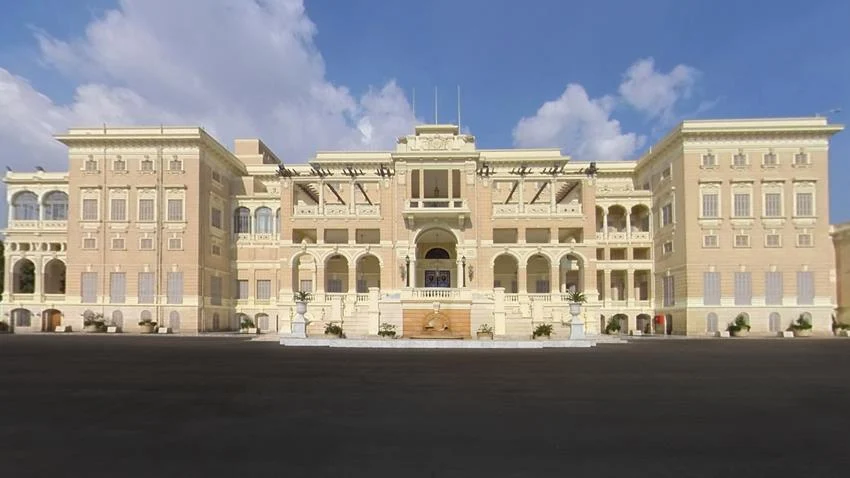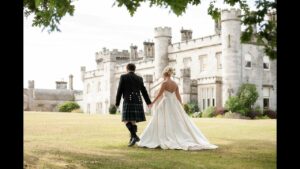Amazing Facts about El Qubba Palace in Cairo

Updated On: March 21, 2024 by Dina Essawy

The capital city of Egypt, Cairo, has an abundance of royal palaces that were once owned by the royal family and inhabited by them for decades. Some of these palaces are currently presidential palaces, closed off to the public, and some are about to be reopened to allow visitors like El Qubba Palace.
History of El Qubba Palace
El Qubba Palace, one of the largest palaces in Cairo, is located in Saray El Qubba, one of the neighborhoods in Cairo that was distinguished by its many palaces and villas. The palace was built in the mid-19th century by Khedive Ismail in 1866 over the ruins of a previous palace that belonged to his father Ibrahim Pasha.
The construction of El Qubba Palace lasted 6 years and it was officially inaugurated with the wedding of Prince Mohamed Tewfik, Khedive Ismail’s son, and after that, it became a venue for lavish royal weddings and celebrations, including the wedding of King Fouad I and Queen Nazli in May 1919 and the marriage ceremony of King Farouk and Queen Farida in January 1938, and to host foreign dignitaries. Later on, his son Khedive Abbas Hilmi II regarded it as the second royal palace after Abdeen Palace.
Renovations to El Qubba Palace
The palace was enhanced and extended during the reign of King Fouad I who also made it the official royal residence. He added a six-meter wall around the 300,000 m2 mansion, a new gate, and an external garden. Moreover, a royal train station was added to the palace complex so that foreign dignitaries could arrive directly from Alexandria or Cairo’s main railway station.
King Fouad died at the palace and his son, and his King Farouk delivered the first-ever recorded speech by a monarch from there as well. Farouk also kept his personal collections at Qubba, including a precious stamp collection, an 8,500-piece coin, and medals collection, studded clocks and watches, a pure gold coffee set, and a Faberge egg from 1906 that belonged to the last Russian Tsar. Sadly, many of these rare and unique objects were auctioned off in 1954, some of which were bought by Queen Elizabeth II and the Prince of Monaco.
The palace continued to serve as a Presidential Palace after the monarchy was abolished, and hosted many notable figures, including American President Barack Obama in 2009, and before that, it was where the Shah of Iran resided when he sought political asylum in Egypt in 1979.
El Qubba Palace and Gardens
The palace is built over 200 acres and is surrounded by a large garden of 80 acres full of Asian plants and trees, in addition to a large collection of plants brought from various parts of the world, and wonderful wooden stalls where the royal family residing in the palace at the time used to spend their time, enjoying the shade and the fresh air.
The palace is made up of two spacious floors. The main hall has two doors facing each other and topped with the insignia of the royal family and the initials of the King. The hall is luxuriously furnished with gilded mirrors made in Belgium, paintings, vases, and antiques, as well as bronze chandeliers made in France hanging from the ceiling.
In the center of a hall is a table made of gilded wood, with a silver cup engraved with the insignia of the Ottoman Empire.
To the left, you’ll find the entrance to the royal office, lined with wood, paneling, and decked with a desk, bookshelves where King Farouk kept his personal collection of books. This office is where Farouk delivered his first speech on the radio in the 1930s. The office ceiling is also gilded and has beautiful chandeliers.
The office leads to a salon space where you’ll find a rare collection of statues, paintings, and antiques by some of the most renowned artists of the time.
A long hall leads from the royal office to a newly equipped conference room.
Back to the main hall, where, if you head to the right, you’ll find the Ministers’ Salon, which was where the monarch or president would receive the ministers and officials. The room is also decorated with several beautiful oil paintings and Green statues.
Another salon is attached to this room, more delicately furnished and the walls are engraved with the insignia of the Egyptian Kingdom at the time.
Then comes the King’s Salon, the main salon in the palace, reserved for receiving Kings and Presidents, furnished with 20th-century French-made ottomans, and in the corner of the room, there is a rare gilded cupboard containing gorgeous bohemian glasses and containers for display. The chandelier hanging in this room goes back to the reign of Khedive Ismail.
The King’s salon leads to a circular hall where two giant Belgium mirrors face each other, each with Greek vases; one with the face of a woman and the other with the face of a man.
Before arriving at the main dining hall, you have to cross a long corridor with incredible paintings and engravings, one of which depicts the famous Don Juan. The main dining hall is one of the most beautiful rooms in the palace, with its incredible and opulent decorations on the walls and ceiling and a unique ceramic chandelier.
Before going up to the second floor, take a moment to admire the gorgeous piano below the giant staircase, above which is a moving oil painting.
Go up the Italian marble staircase to the second floor to find a spacious hall similar to the one below in its beauty and stunning engravings and rococo and baroque designs. On either side of the hall is two glass cupboards displaying rare photographs of the royal family and many famous visiting officials and dignitaries. It also contains several very rare pieces, such as the ingenious musical cupboard that belonged to King Fuad I. You can step out onto the balcony that overlooks the spacious palace gardens as well. This is where King Farouk once stood to greet the people of Egypt in 1936 after his return from London to ascend to the throne following his father’s passing.
Then, step into the Royal wing where there are several rooms for the companions of any visiting officials to stay in. Each room has its distinct and unique design.
The personal rooms in the royal wing for the ruling family include a beautifully furnished salon with a cupboard carved into the wall showcasing rare and priceless artifacts, including a watch encrusted with diamonds and silver plates, as well as a French-style fireplace.
Finally, we arrive at the King’s bedroom at El Qubba Palace with empirical-style furniture and an anteroom attached to it decorated with paintings depicting European life in the Middle Ages and a cupboard showcasing photographs of princes, princesses, ruling figures, and dignitaries from all over the world that were sent to King Farouk.
The Queen’s room is even more harmoniously furnished with rose-colored furniture and delicate paintings.
El Qubba Palace Today
In April 2021, El Qubba Palace is set to open to the public for the first time, with a concert, after which visitors will be allowed to enter the palace and explore its rooms and beautiful gardens.






